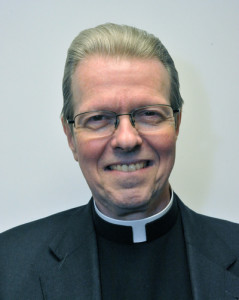 News of the appointment of Msgr. Edward B. Scharfenberger to become the 10th Bishop of Albany, N.Y., is a source of pride and joy for all of us in the Brooklyn Diocese. As well it should be. The new bishop-elect is a product of what represents the best of our heritage. We do not speak only in the past tense, since we hope and pray that this heritage will carry us well into tomorrow.
News of the appointment of Msgr. Edward B. Scharfenberger to become the 10th Bishop of Albany, N.Y., is a source of pride and joy for all of us in the Brooklyn Diocese. As well it should be. The new bishop-elect is a product of what represents the best of our heritage. We do not speak only in the past tense, since we hope and pray that this heritage will carry us well into tomorrow.
Ridgewood, where the bishop-elect was born, baptized, raised, schooled and sent “to pastor,” is typical of many of our multi-ethnic communities throughout the diocese. It does not sing its praises very much. That would not be becoming of its hard-working, family-centered, immigrant-friendly citizenry who have long been kind to children, seniors and, truth to tell, pets and even decedents. Although this is anecdotal, Ridgewood excels in its war memorials and veterans centers and may well have more cemeteries and dogs than any other in the metropolitan area.
It is with good reason that we can feel that the new bishop will bring to the people of Albany the best of his Brooklyn roots – which is, of course, the people who have nourished and sustained him in his priesthood, each and every one of us in some way.
Speaking of priesthood, the duty and necessity of fostering priestly vocations belongs to us all. When asked about the origins of their own vocations, many priests call attention to the example of their parish priests, the encouragement of their teachers, lay and religious, and of course, their parents and grandparents who did not try to dissuade them from following the call, even though they knew it entailed great challenge and sacrifice.
Msgr. Scharfenberger has often spoken of being impressed by how his parish priests visited the elementary school he attended at Our Lady of the Miraculous Medal. He recalls friends speaking so well of some of them (“don’t you wish Father so-and-so was your father?”). His parents are now 93 years old, and he does not remember a single Sunday or Holy Day of Obligation when he was not at Mass, usually with one or both parents or with his brothers, sisters and schoolmates. The Sisters of Notre Dame of Namur – there were over 20 of them at the convent serving the school and parish back then in the 1950s – were excellent educators: prayerful, present and resourceful.
We have all been in circles where some of our Catholic friends will speak of this or that priest, nun or brother with whom they had a problem. Some of this negative narrative has actually become the subject of parodies played out on and off Broadway or in the movies. Yet many people also recall the real humanity of the priests and religious whom they were privileged to get to know more personally. It is a sad tragedy of our time that many young people have no personal acquaintance with a priest or religious at all. What they know – or think they know – may be little more than the bad examples they have heard of through the media or even at home.
Let’s face it: Our young people need good role models today, perhaps more than ever. It is a challenge that every priest and consecrated religious faces to be as personally present and engaged as possible with youth who are far more exposed to the worst examples from the culture of celebrity acting out (to be charitable) well into their adult lives – conflicts they never resolved in their formative years.
Brooklyn has often been called a “city of churches.” Indeed it is! We know well, however, that the Church is really more than just a collection of buildings, however beautifully designed and maintained. It is a family of families – and for those who have no family. No one can make this happen but we ourselves. Our priestly and religious leaders of tomorrow will not emerge from sacristies or descend from the choir lofts. They must continue to be home grown.
